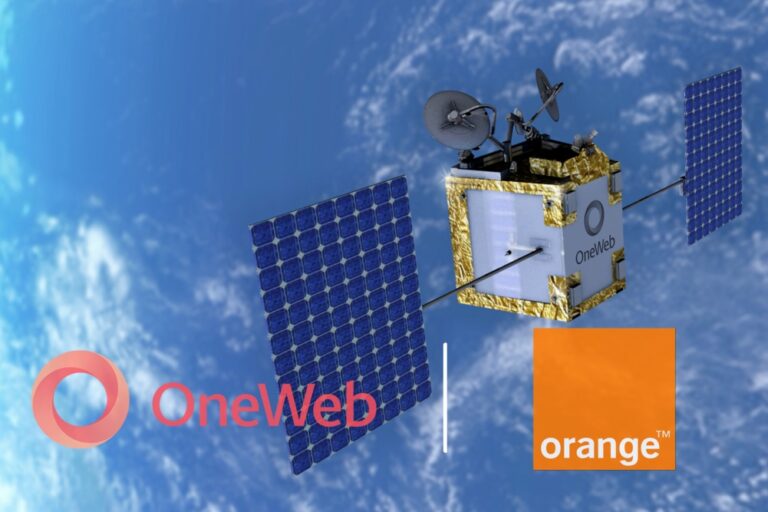Sponsored: Intelligent, scalable platforms can help data deliver new, unique and superior customer experiences and even save lives
Andrew Feinberg, Chairman and CEO of Netcracker Technology and BostonGene Corporation (pictured left), and Takayuki Morita, President and CEO of NEC Corporation (pictured above), discuss how intelligent, scalable platforms can help utilise data to deliver new, unique and superior customer experiences for telecommunications service providers to improve society as a whole and even save lives.
The term ‘data-driven society’ has been in use for several years and defines a world where data is being produced and captured in all aspects of everyday life. With estimates of the amount of data generated predicted to grow from 96 zettabytes in 2022 to almost double that to 186 zettabytes in 2025 (1 zettabyte equals 1 trillion gigabytes), there’s the real possibility of not just data overload but a data tsunami. Making sense of this data to provide profitable business outcomes will demand a cutting-edge business platform that is underpinned by advanced analytics and artificial intelligence (AI).
As the chairman and CEO of two seemingly very different and unrelated companies, can you tell us about the synergies and commonalities between Netcracker and BostonGene?
Andrew Feinberg: On the surface, you might think that Netcracker – a telecom software company – and BostonGene – a personalised cancer diagnostic and treatment company – would not have very much in common. What draws them together, however, are key factors that are critical for companies of all sizes and in different fields: customer experience, personalisation and powerful analytics.
The success of both companies depends on cutting-edge business platforms that use and analyse extraordinary amounts of data to provide exceptional value to their end customers.
For example, at Netcracker we leverage data and analytics to improve communications service providers’ (CSPs’) networks, services and customer experiences. At BostonGene, we use data and analytics to fight life-or-death battles against cancer. Very different outcomes, but very critical ones in their respective fields.
Netcracker is a pioneer in simplifying operations and helping operators focus on their core business so they can give the best possible experience to their customers. At BostonGene, we are taking the same customer-centric focus but in this case, it’s helping doctors focus on each patient with treatment plans that are tailored just for them. Given the complexity of factors and vast amounts of data available, it is impossible for a single doctor, or even a team of doctors, to rapidly and effectively analyse all of the information to come up with optimal treatment plans for every patient.
Similar to Netcracker, a powerful cloud-based enterprise software platform is at the core of BostonGene’s operations. Layered on top of it are powerful bioinformatics and comprehensive genomic profiling that transform our entire healthcare ecosystem by providing lifesaving personalised treatment plans for cancer patients
Could you give an example of how BostonGene uses technology in cancer care?
Feinberg: It’s truly remarkable what we can do with proper analytics today. Traditionally, a cancer patient would be put on a regimen based on assigned diagnosis. However, no two humans are the same at the molecular level and because of that, a treatment that is successful for one person can be ineffective, toxic or even lethal for another with the same diagnosis.
Consider the case of Eric, a 49-year-old father of three in New York who was diagnosed with non-small cell lung carcinoma in 2021. He was prescribed a frontline chemotherapy treatment that was so toxic he had to take a leave of absence from work. Unfortunately, the therapy was not successful and the disease continued to progress. Over the following nine months, the second and third line treatments proved to be unsuccessful and had a debilitating effect on Eric, who became weak to the point of being completely bedridden.
As his condition worsened, Eric’s physician suggested additional genomic testing through BostonGene, which showed a particular mutation missed by the previous testing. Our AI-based technologies provided sophisticated analysis of millions of data points; that is, molecular data specific to the patient, data from clusters of similar patients with lung cancer and treatment study data from around the world. This led to a targeted treatment plan based on genetic insights and correlations to other cancer types. Scans taken within four months of starting this new, personalised treatment indicated that the tumor shrunk dramatically.
Today, Eric is back at work, playing sports with his kids and living a full life. It is very possible, even likely, that Eric would not be alive if it were not for the incredible technology that combines basic science with powerful bioinformatics. I see Eric and all other patients whose treatment was prescribed or changed with the help of BostonGene as living proof that software and analytics are the future of fighting this insidious disease.
Without advanced genomic sequencing techniques and a targeted, personalised treatment plan, the disease would have continued to progress and worsen instead of being eradicated. The BostonGene platform utilises a vast amount of bioinformatics data, correlation analysis and predictive modelling and real-time decisioning to create the right personalised treatment plan that saved this patient’s life.
Morita-san, in the past, NEC was known as a network equipment and system integration services company. How has the company’s focus evolved over the years?
Takayuki Morita: NEC has more than 120 years of history behind it, but we are always looking forward and nurturing world- class technologies and the capabilities to implement those technologies. In 1977, we announced the concept of ‘C&C’, which is the integration of computer and communications technologies.
In the last 10 years, as different technologies have become widely used around the world and digitisation has progressed, NEC has expanded its business across a wide range of markets, such as smart cities, green technology, healthcare and cancer treatment. Today we are a truly global business with operations that reach far beyond our home in Japan. Through our relentless pursuit of innovation and uncompromising commitment to research and development, we have grown beyond our roots into new and exciting markets.
NEC has a long history of providing technologies for telecommunications companies. In addition to our significant R&D investments, we are strong supporters of the Open RAN initiative and believe that O-RAN will bring many benefits to the industry. NEC views 5G, 6G and beyond as critical infrastructure for a truly digital society.
NEC has worked with many local governments including Lisbon in Portugal, Tigre in Argentina, Ahmedabad in India, Singapore and throughout Japan to create smart cities using appropriate data sets. These projects include solutions for smart bus systems, public safety and waste management. NEC is also working on environmental issues such as food production.
By leveraging data from satellites and sensors, our AI and data analysis solutions are helping farmers achieve higher yield harvests while using less water and fertiliser. And finally, in Japan, we are offering disaster prevention and mitigation solutions as we adapt to more volatile weather patterns due to climate change.
Our philosophy is that we have a responsibility to transform our strengths in the technology area into more concrete results in terms of safety, security, fairness and efficiency from the standpoint of the consumer. In other words, we endeavour to connect digital technologies and the human experience to implement a vision of a brighter future and a more sustainable world.
How can data enable the digital society?
Morita: Our vision of the future will not come to fruition without the intelligence and insights gathered from data, but thechallenge is to turn that into actionable outcomes that will improve society. Using analytics and our industry-leading AI solutions, we’re able to quickly respond to a number of very diverse situations.
A few examples include using road surface data to proactively maintain sections of a highway to provide a safer driving experience; identifying fraudulent financial transactions in real time; looking at purchasing patterns in stores to optimise product displays and restocking; and improving workflows using chatbots.
In all these cases and many other examples from different industries, the underlying foundation is a vast amount of data that can be turned into real-world solutions that improve efficiencies, decrease costs, optimise processes and simplify transactions.
In your opinion, what technology will have the greatest impact globally in the next five years?
Feinberg: Staying with the theme of data, I believe the ability to harness, manage, process and act on massive amounts of data that results in meaningful and actionable outcomes across industries will have a major impact over the next few years.
Data and analytics are critical tools that will make it possible to improve lives around the world, and having a next-generation platform to streamline processes, reduce costs and bring in new revenue opportunities will be critical.
But with these advances in technology, we must not lose sight of the human part of the equation, which should always take the lead. Whether it’s in telecom or medical research, people are always at the core of our efforts. BostonGene has patented hundreds of innovations for software analytics that can take the massive complexity of each case and create the right personalised treatment plan that will be most effective. This is the future of fighting cancer.
Similar to the BostonGene example, the ability to leverage BSS/OSS data to create digital twins of networks, services, subscribers and even competitors is required for
telecommunications service providers to effectively compete, drive profitable growth and create the best customer experiences in every single interaction.
Digital twin data is fully separated and anonymised under GDPR rules to ensure subscriber privacy is upheld while providing a valuable resource to enhance deep-level analysis. Netcracker is taking the innovations and insights from the work within BostonGene to enhance BSS and OSS capabilities in processing the oceans of data service providers collect to effectively model, predict and take the right actions in real time.
This is the future of telecom systems.
Can you please share how NEC is pioneering the use of AI to advance various healthcare initiatives, leading to improved outcomes for patients?
Morita: NEC has a proud 50-year record of contributing to the medical field, and in 2019 we amended our Articles ofIncorporation to include the promotion of business related to drug discovery and medical systems. NEC invested in BostonGene and acquired OncoImmunity in Norway (now known as NEC Oncolmmunity), a leader in using AI to develop cancer immunotherapy.
Today, NEC companies and partners are conducting personalised cancer vaccine trials that utilise NEC’s AI-driven neoantigen prediction technology. I’m excited to announce that preliminary results are quite encouraging. We have also nurtured a strong partnership with the Coalition for Epidemic
Preparedness Innovations (CEPI) to leverage our AI-driven biotechnology to develop next-generation vaccines that are effective against various coronaviruses. Moreover, we have entered into a partnership with Shionogi – a global pharmaceutical company based in Japan – to collaborate on a therapeutic vaccine for hepatitis B. Going forward, we will continue to collaborate with medical institutions and drug manufacturers in our efforts to improve health outcomes around the world.
How does bringing order to data chaos lead to better personalisation, both in terms of customers of mobile operators and cancer patients?
Feinberg: By applying analytics, AI, machine learning and real-time decisioning to the large volume of data, Netcracker has led the way in helping telecom service providers deliver the best experience to their customers. We can create unique, compelling and personalised journeys that are meaningful and help with retention and loyalty.
BostonGene is also making its mark in the area of personalised customer journeys, but in this case, it’s life-saving diagnostics that bring individualised and personalised cancer treatments to patients. So rather than treating the disease, we treat the patient.
The challenges our businesses and society face today are complex, and that complexity is continuously increasing as we are flooded with more and more data. Technology is a tool, and like any tool it can be used for the greater good or for less than noble purposes such as spreading misinformation or maliciously manipulating data for personal or political gain.
Our role, and I would argue our responsibility as technology and business leaders, is to leverage data in a positive fashion – to improve our society, to enrich our experiences and of course to save lives. This is where both BostonGene and Netcracker are investing: creating the software platforms and technology solutions to manage, process and act on massive amounts of data to deliver the best possible results.
Regardless of industry, market or geography, in everything we do at Netcracker and BostonGene our first and last thoughts are reserved for the customer. We founded Netcracker 30 years ago and BostonGene just a few years ago, but in both cases the driving force and reason for our success over the years has been our never-wavering focus on the customer. As long as we keep that in mind, we will be able to continue delivering the best possible outcomes for our customers and, by extension, society in general.











